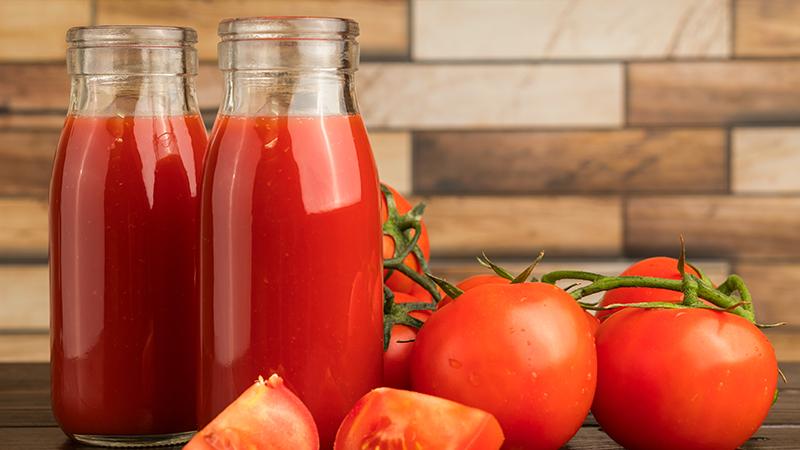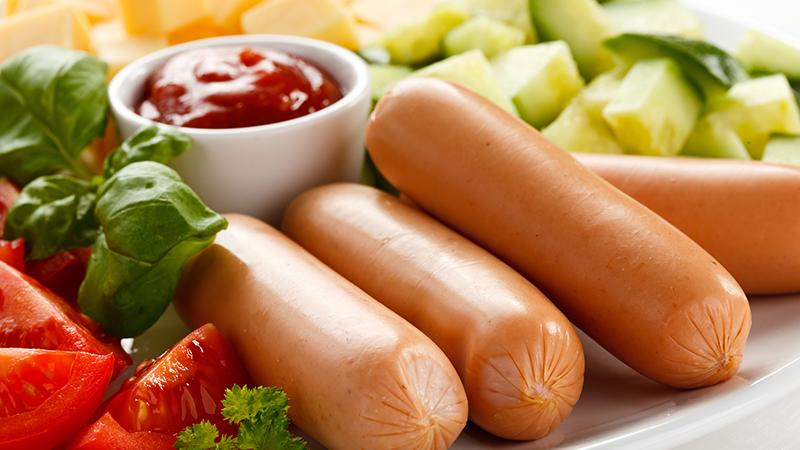Sausage, sauce and beer - technology behind production of all-time favorite BBQ ingredients
A sneak peek behind the production of barbecue specials - sausages, ketchup, and beer
As the dark nights recede and the days get longer and sunnier it’s time to turn our food-preparation attention from the kitchen to the garden. Grilling food outside and eating it in the sunshine somehow makes it taste even better than the same food cooked indoors. But not so fast – getting the sausages, ketchup, and that perfectly chilled bottle of beer ready for our summer feasts takes time and a great deal of accurate measurement technology. Let’s take a break from dreaming of summer nights and al fresco dining to find out how food producers are ensuring the quality and consistency of our summer food and drink essentials.
Sizzling sausages on the grill - how are sausage casings made?
A fat, juicy sausage is the essential ingredient in a mouthwatering barbecued hot dog, so it’s no surprise that globally the demand for sausages is expected to grow by 4% a year until 2025. To accommodate this growing market, many manufacturers have switched to artificial casings, which make it easier to streamline sausage production and ensure delicious consistency from batch to batch. To remove the need for manual sampling and testing, in-line process refractometers can continuously monitor the artificial casing process, increasing process efficiency, and product uniformity.

Artificial casings are often turned into sausages using a process called co-extrusion, where the casing is created as the sausage is produced. The meat mixture and casing gel are simultaneously extruded and the gel is then coagulated through contact with a brine solution. The amount of water in the solution increases as the sausage passes through, diluting the brine. To ensure optimal product quality, color, and texture, fresh salt needs to be added to the brine to keep it at the desired concentration level – a refractometer can provide continuous, real-time information to help maintain this target level and ensure the resultant sausage skin is perfectly formed with the same high quality every time.
Refractometers provide a similar monitoring role in the production of cellulose sausage skins, ensuring the correct concentration of sodium hydroxide, which desulfurizes the cellulose fiber cloth that is used to create the casings.
A squirt of sauce on the side - what's the secret of tomato sauce consistency and taste?
You’ve got your sausage fresh off the grill – what do you need next? A big dollop of tasty ketchup. Ketchup, or tomato sauce, is one of the world’s most popular condiments and everyone has their favorite brand that makes it just the way they like it. It’s therefore essential to maintain the perfect balance of tomatoes, sugar, vinegar, water, salt, and seasoning in your recipe to keep your loyal consumers happy. To do this, our friend the refractometer is again on hand to provide consistent quality control by continuously monitoring concentrations throughout the production process, helping to keep the consistency perfect. Delicious!

And an ice-cold beer to quench your thirst - malt production and beer brewing monitoring
That’s the food sorted, but what will you have to drink? If you’re reaching for a beer it’s important to recognize the role accurate monitoring has played here too – put simply, better data leads to better beer and better data comes from continuous monitoring. The first step in the beer brewing process is the processing of malt grains to extract a substance called wort. Companies like Viking Malt which supply malt products to the brewing industry use continuous humidity monitoring to ensure the consistently high quality of their products while saving energy and improving profitability. High-quality beer depends on the use of high-quality malt and Viking Malt has found this is best achieved with a Vaisala Indigo 520 transmitter, Vaisala HMP 7 humidity probe, and a Vaisala TMP 1 temperature probe to avoid either over or under drying.

Once brewers have extracted the wort from the malt, they then ferment it using yeast, filter the resulting liquid, and bottle it. Refractometers throughout the brewing process enable process optimization, saving energy, reducing waste, lowering cost, and helping to deliver a top-quality drink that’s consistently the same in every bottle or can. Different process conditions have different requirements, so Vaisala sanitary refractometers are supplied factory calibrated, taking the specific brewery conditions into account.
The perfect recipe for summer
So this summer, when you’re outside enjoying sausages, ketchup, and a beer in the garden or on the terrace, raise a glass to the measurement technology that’s helped ensure the safety, consistency, and high product quality of your food and drink – all that’s missing now is the sunshine!
Interested about technology and measurement solutions for food industry?
Read more in-depth about these yummy topics:

